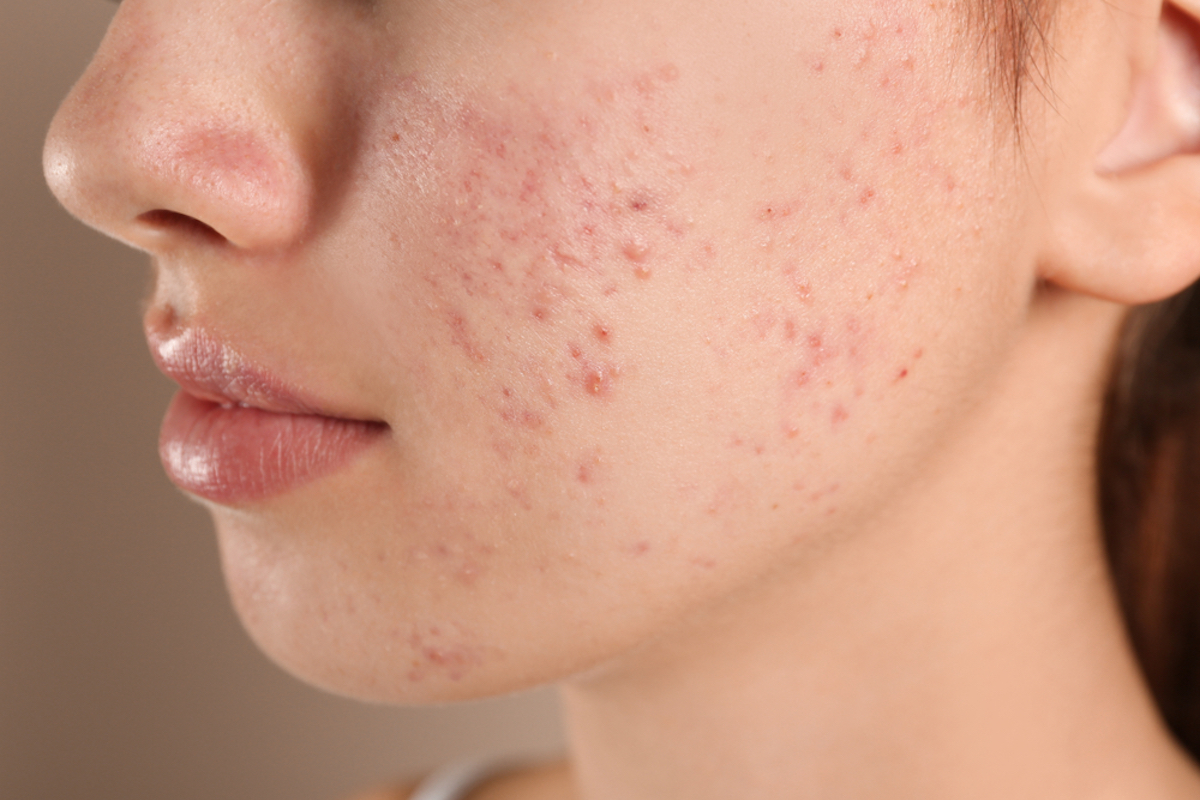About 50 million Americans are affected by acne each year. This makes it the most common skin condition in our country. Often the first symptoms begin in adolescence and persist as adults. About 85% of teens and young adults (ages 12 to 24) experience mild to severe acne in their younger years. Thankfully, there are great treatment options, but the skin condition can be persistent. As almost everyone has a chance of getting it, it’s good to know how you can recognize it and what types, and treatment options, exist.

What Is Acne?
First, it is good to understand what acne is, because the occasional pimple on your forehead, because you have an oily hairline, is not called acne. When a person suffers from this inflammatory skin condition, the oil glands at the base of the hair follicles are clogged by oil, dead skin cells, and other filth. This manifests itself in severe and large pustules – inflamed hair follicles.
It’s mainly caused by androgen hormones. A combination of hypersensitivity to the activity of these hormones, poor skin care, and fatty acids within oil glands can cause the likelihood of this skin condition. Other risk factors include picking at the sores, clothing & headgear, air pollution & humid weather, stress, medication, genetics, and the menstrual cycle. The skin condition is most recognizable on the face, but it can also be on other areas of the body, such as the shoulders, neck, back, chest, and upper arms.
Types of Acne
This skin condition can show itself in different forms. These forms include:
- Blackheads
- Whiteheads
- Papules
- Pustules
- Fungal acne
- Nodules
- Cysts
Blackheads are open bumps that may fill with excess oil & dead skin. You might think it’s dirt, but the dark spots are caused by light reflection off the clogged follicle. Whiteheads are closed, clogged follicles. Fungal acne happens when yeast excess clogs the hair follicles. Continue reading on the next page and learn, among others, how you can treat this skin condition.

